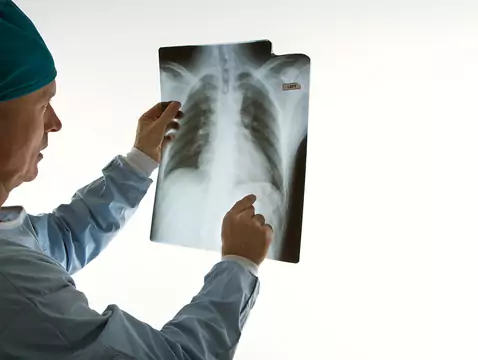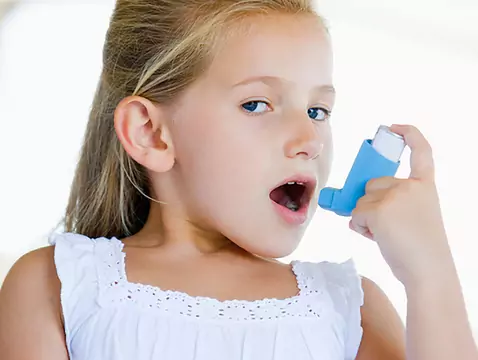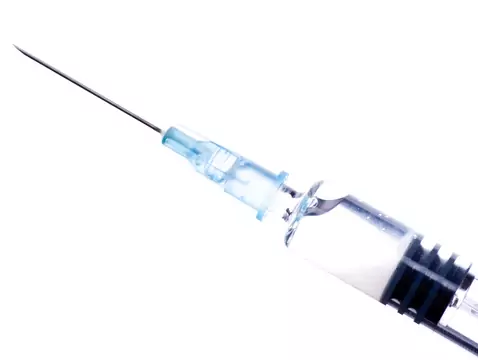Respiratory system (62 contents)

Effects of marijuana smoking on the lungs
There is a constant debate around cannabis - some are in favour of it and argue that it should be legalised, while others are clearly against it and point out the health risks associated with its...

Recuperation after pneumonia
Anyone who has undergone pneumonia knows how difficult it is to return to daily activities such as physical activity or even housework. The matter may seem trivial, as we have cured ourselves, so...

Omega-3 fatty acids reduce the risk of asthma
The prophylactic intake of long-chain, polyunsaturated omega-3 fatty acids by pregnant women during the third trimester has been shown to reduce the risk of asthma, wheezing episodes and respiratory...

Laryngeal dyspnoea - can we help?
Shortness of breath is a condition of airway constriction that can be a life-threatening condition if a situation of complete airway obstruction develops. Dyspnoea can have various causes, one of...

Prevention of allergic respiratory diseases
Allergic diseases are increasingly prevalent in the paediatric population. These include food allergies, allergic rhinitis and bronchial asthma. Prevention of these conditions is extremely important.

Pulmonary tuberculosis in children: part 3
The third and final part of the article on pulmonary tuberculosis in children discusses the treatment of this serious respiratory disease.

Pulmonary tuberculosis in children: part 1
The first part of this article for doctors and medical students discusses the epidemiology and pathogenesis of mycobacterium tuberculosis infection.

Pulmonary tuberculosis in children: part 2
The second part of the article on tuberculosis in children discusses the principles of diagnosing tuberculosis based on radiography, tuberculin test and microbiological tests.

The role of enveloped bacteria in infections in children under 5 years of age
Clinical picture and prevention options for envelope bacterial infections that pose a high risk to children under 5 years of age

Bronchial asthma, part 1: causes, symptoms
The first part of this article on bronchial asthma explains in an accessible format the causes of asthma, its most common symptoms and how to assess respiratory function.

Pneumococcus - causes, symptoms, diagnosis, treatment
Pneumococci (Streptococcus pneumoniae bacteria) are particularly dangerous for people in so-called risk groups.

Baby can't breathe through the nose
Difficulty in breathing through the nose is quite often observed in infants, occurring despite the absence of an obvious runny nose. This is sometimes accompanied by sounds described as wheezing.

Cystic fibrosis - newborn screening
Cystic fibrosis is a disease with an incidence of approximately 1 in 2500-3000 births. It is considered the most common autosomal recessive disease of the Caucasian race. For this reason, many...

Cystic fibrosis - genetic testing
The cause of cystic fibrosis is a mutation in the CFTR gene, which encodes a protein responsible for transporting ions across cell membranes. This gene is located on chromosome 7.

Pneumococcus - who is a carrier
Pneumococcus, or Streptococcus pneumoniae, is a bacterium frequently found in the respiratory tract of children. In healthy children, it is considered part of the normal flora of the respiratory...

Pneumococcus - what increases the risk of illness?
Streptococcus pneumoniae is a bacterium commonly referred to as pneumococcus. It colonises the respiratory tract of many children. In favourable circumstances, it can cause what is known as...

Pneumococci - whether to vaccinate children over 2 years of age
Pneumococci (Streptococcus pneumoniae), are bacteria that cause serious infections in children, such as meningitis, septicaemia and pneumonia.

Pneumococcus - vaccination at two years of age
A modern, conjugated pneumococcal (Streptococcus pneumoniae) vaccine is now available in our country, with documented efficacy in children as young as two months of age.

Pneumococcal - vaccination in infants
The only commercially available pneumococcal (Streptococcus pneumoniae) vaccine with documented efficacy in children as young as two months of age is Prevenar.

Asthma in pregnancy - causes, symptoms, diagnosis, treatment
Asthma is a chronic inflammatory disease, usually of allergic origin, manifested by shortness of breath, coughing and wheezing, occurring as a result of disorders of the respiratory system due to...

Allergies in pregnancy - causes, symptoms, diagnosis, treatment
A reaction of the body to factors known as allergens (certain foods, grass pollens, house dust mites and others) manifested by rhinitis, hives and, in the most severe cases, asthma or anaphylactic...

Allergies in pregnancy - causes, symptoms, diagnosis, treatment
A reaction of the body to factors known as allergens (certain foods, grass pollens, house dust mites and others) manifested by rhinitis, hives and, in the most severe cases, asthma or anaphylactic...













